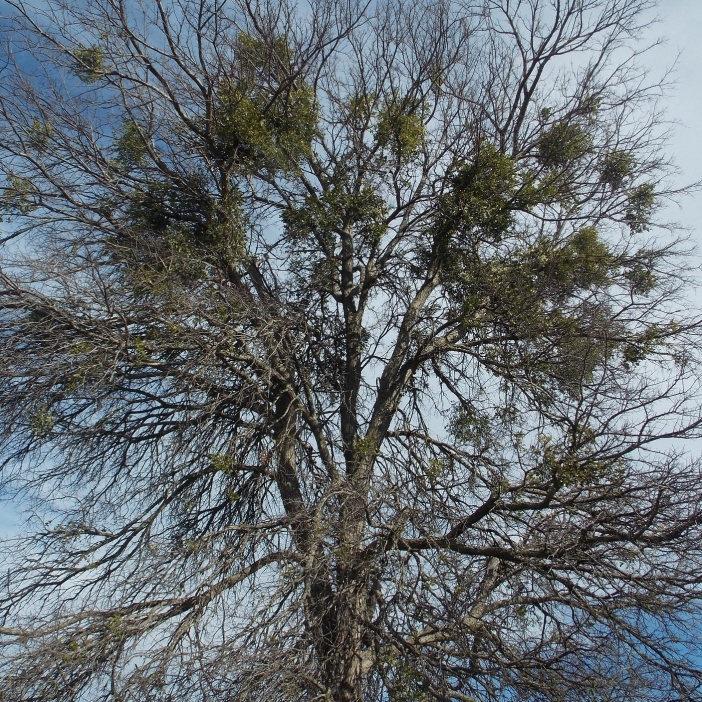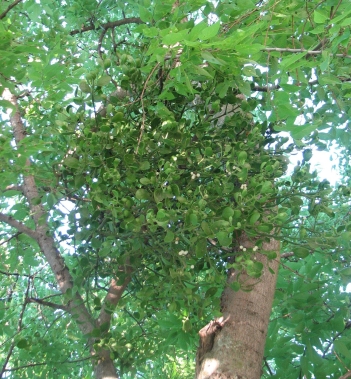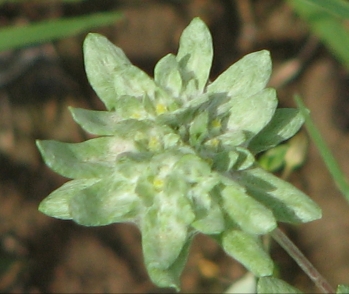Mistletoe; Christmas/American Mistletoe Phoradendron flavescens Nutt;. There are dozens of varieties of mistletoe, in some cases one specific mistletoe parasitizing only one specific species of tree, or type of tree. The most common mistletoe in central Texas, with a number of distinct varieties, P flavescens afflicts a range of plants, especially Cedar Elm and Hackberry. Mesquite and cedars, and to a lesser degree, oaks are immune from this particular mistletoe, as they have their own. Green all year long, mistletoe provides green foliage in the winter, producing translucent, white, round berries born in whorls on stems that rise from leaf axils. The thick, leathery, oblong leaves arranged in opposite pairs, range from dark green to yellowish green, giving it its descriptive Latin species name, flava “yellow”. Mistletoe are powerful abortatives in cattle, and are generally considered poisonous, though symptoms in humans are mostly stomach upset, nausea, dizziness, etc. Passing through the digestive tracts of certain song-birds, Mistletoe sprouts from seeds, wrapped in a sticky coating which land on a branch, then drives wedge-like spikes through the bark and into the wood of its host tree. Intercepting plant juices and eventually taking over the branch it is on, it can kill the part further away from the trunk. Pruning infected branches off is the most effective mechanical way of keeping mistletoe out of trees, for even if the brittle mistletoe twigs are snapped off they will grow back from the infection site. 17 not recrd; 18 no obs; 19 not recrd;

Note; an infestation of mistletoe makes a winter dormant Cedar Elm look green

Note; clumps of evergreen mistletoe.

Christmas Mistletoe habit; clumps of thick, oval leaves hanging from mature branches of trees, mostly Elm, Hackberry and Osage Orange, evergreen, with small white berries

Note; thick, oval leaves born in opposite pairs, each pair rotating 90 degrees, stay green all winter long

Note; small, round, white berries eaten by birds, bud in whorls from leaf axils, the seeds sticking to branches they fall on when expelled from birds that eat them


























